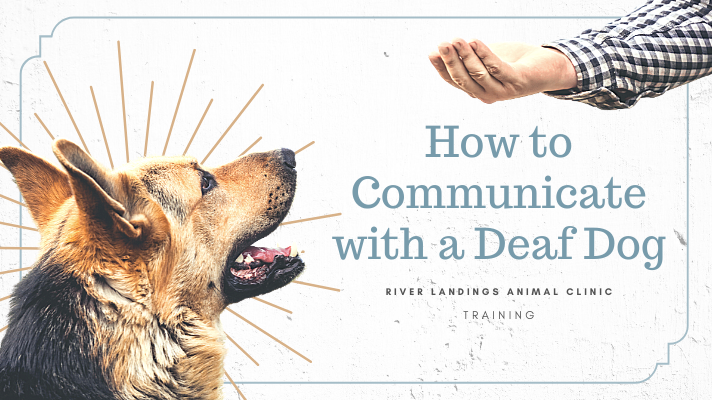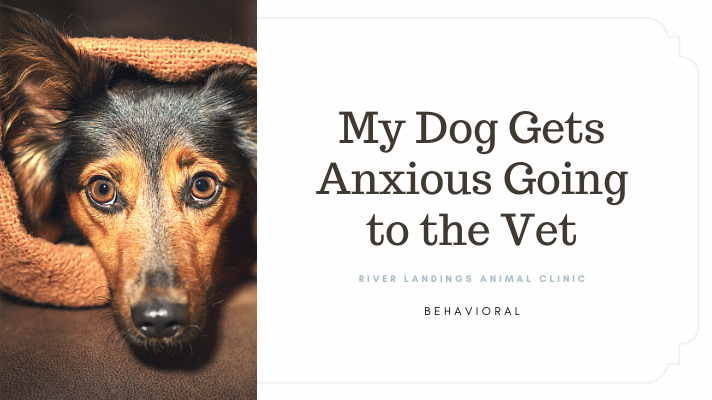Do you own a deaf dog? Have you ever had the opportunity to work with a deaf dog?
Different strengths, different senses, different strategies
Although all dogs are acutely aware of body language, deaf dogs are even more keenly observant of body language and gestures.
While training relies on verbal (often not entirely effectual) communication quite frequently, that method obviously does not suffice for a deaf dog. Deaf dogs require families to focus on training in a different way; a way that can certainly be used with all dogs, but is essential for those with hearing loss. But, how do you begin to work with a deaf dog when the default or “go-to” form of communication is verbal?
Owners and trainers “speak” to dogs, teaching them to comprehend intent and meaning. With a deaf dog, the verbal avenue is not an option. Communication needs to focus on the visual sense instead. What is most important is to be careful and deliberate with hand, face, and body movements. Even with this change in emphasis from verbal to visual, if you have trained an animal with an auditory or verbal marker, the shift in training is not all that significant once you get the hang of it.
Bridging the communication gap
Consider a "hand flash" approach with your deaf dog in training. A hand flash is where all fingers start together in a fist, then the fist releases to an open palm hand with all fingers out straight, followed by a return to the original fisted position. Others choose to use a “thumbs up” gesture for a visual marker. As with any marker, we pair the marker with a reinforcer consistently so that it becomes a conditioned reinforcer.
Step one is teaching your dog that this hand flash means good things! Just as a trainer may choose to “load the clicker” a few times in order to create the association that the marker equals something reinforcing, follow the same process with the visual marker. To start, a hand flash is immediately followed by a treat delivered with the other hand. This pattern is repeated a series of times until you are certain your dog has realized that the hand flash communicated that your dog has earned access to something that they found reinforcing.
The next step is to watch for something that your dog did that you like. For example, when they sit, mark that behavior with a visual hand flash marker and then reinforce the behavior. With a deaf dog, one of the most helpful behaviors, and one to work on first, is to mark and reinforce heavily for eye contact.
Attention! Atten-tion!
Getting a deaf dog’s attention is another consideration, as it is not possible to call out to your pup. Fostering a “check-in” behavior is essential. Each and every time that your dog looks at you, you should mark and reinforce this behavior. Sometimes you can get your deaf dog’s attention via vibrations. Tapping or stomping on the floor may create a vibration large enough to attract your dog’s attention. Once your dog looks at you, mark and reinforce that attention. In addition, waving hands or arms at a distance can gain your dog’s interest. Again, once your dog looks in your direction, mark and reinforce that attention.
Another option is if it’s dark or at dusk is to flick the lights off and on to draw your dog’s focus back to you. Some people use a small flashlight, but remember never to shine the light directly into your dog’s eyes. It is not advisable to use a laser pointer. Use the flashlight like a “clicker” or a special signal and turn it on/off quickly to mark a behavior. Remember that every time you mark you will want to follow up with something that your dog finds reinforcing. The marker is like a “promise” of access earned to something reinforcing, so be sure to keep your promise by providing that access after each marker.
Another helpful behavior to train with a deaf dog is a shoulder tap that means “look at me.” Tap your dog on the shoulder and then pop something yummy (just a tiny piece) in their mouth. Repeat this pattern often, and in every room of your home, and then begin to practice outside as well. Your dog will come to understand that the tap equals good things for them, and they will begin to turn back to you anticipating the yummy treat. Continue to practice and “pay” for your dog turning to look at you. Eventually, after many, many, many repetitions, you may be able to replace your food reinforcer with attention and affection. In order to keep the behavior strong once it has been established (once you can rely on your dog turning to look at you when you tap them on the shoulder), continue to surprise your dog from time to time with something delicious as a reward.
When you start to train the shoulder tap, be mindful that deaf dogs often startle. As a deaf dog cannot hear an approach, and sometimes cannot feel the vibrations of someone nearby, the dog may startle when you appear suddenly. Work on associating people approaching with positive things. You may have to hold a tiny bit of yummy food each time you get near your deaf dog. Moving from room to room around your house, let your deaf dog know that you have gone. Walking directly past the dog or offering a light touch on your way out may help your dog feel less anxious since they have seen you leave. Your dog may choose to follow you or stay put; however, the anxiety of not knowing what happened to you has been eliminated.
Visual signals
The next step in training a deaf dog is to build more visual cues for communication. Some people choose to use American Sign Language (ASL) signs and/or single-hand adaptations of the ASL signs. You can also make up your own signals as long as they are distinct and consistent.
The importance of recall
Another vital part of communicating with a deaf dog is teaching a recall. It is ideal to work on longer-distance recalls in fenced areas or with a long leash. However, as with any behavior, you will want to start training in close proximity and in a low-distraction environment. Move away, at first just an inch at a time, and then signal with a visual cue for your dog to come to you. Mark movement toward you and be sure to reinforce as your dog arrives where you are. As with any recall, slowly build distance and eventually build in distractions.
The regular “check-in” behavior that you trained earlier will be important now as you work on recall with a deaf dog. You need your deaf dog to look back at you for instruction. Behaviors that are reinforced are repeated, so be sure that your pup finds coming to you when “called” a highly reinforcing behavior! Remember, just like training a hearing dog, be sure to break any new behavior into small pieces and train in short training sessions with many opportunities to “get it right.”
Expect and handle frustration
Sometimes an owner feels as though the animal understands what is being communicated, but simply chooses not to respond as desired. At other times, the human is frustrated with his/her difficulties communicating the desired outcome to the dog.
These are common frustrations training ANY dog, or ANY animal. However, with a deaf dog these feelings of exasperation may be intensified. Try to remember that even if you believe you have broken down the task into very small, manageable pieces and are communicating very clearly and efficiently, you are, in fact, communicating with a different species.
Because humans are verbally oriented in our information exchanges, communicating in different ways with a deaf dog may be a struggle at first. Any time that you feel overwhelmed, stop, and take a break. Revert back to something very simple, like making eye contact and marking and reinforcing this successful behavior. Celebrate tiny accomplishments; remember that this is a marathon and not a sprint. Your communication and training with your deaf dog, as with hearing dogs, will be a lifelong endeavor.
Deaf dogs: both students and teachers
Deaf dogs can make great ambassadors for positive reinforcement training. The word, and in the case of deaf dogs the signal or sign, for “no” is not something that is suggested to teach during your valuable training time. Telling an animal “no” does not provide much information. “No” is not a very clear communication tool, as it leaves the situation rather nebulous: “No what?” In its place, it is recommended to work on incompatible behaviors and impulse-control training. In that way, you can offer your dog the choice to make good decisions about what you DO want the dog to do!
Learning is not an upward and linear journey; it is a journey prone to setbacks and confusion. To achieve success with your deaf dog, maintain a positive attitude, take pride in small milestones, and acknowledge that your relationship is becoming stronger. Deaf dogs can teach a great amount about care, compassion, and novel training methods.






